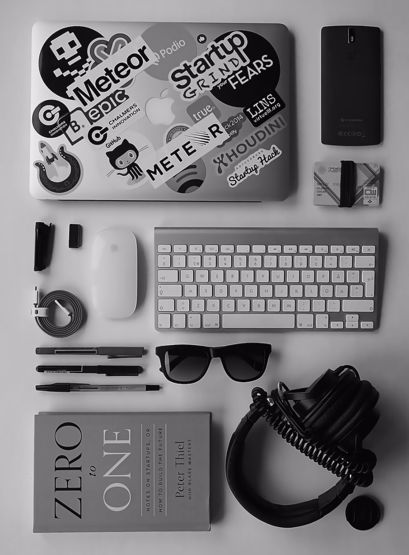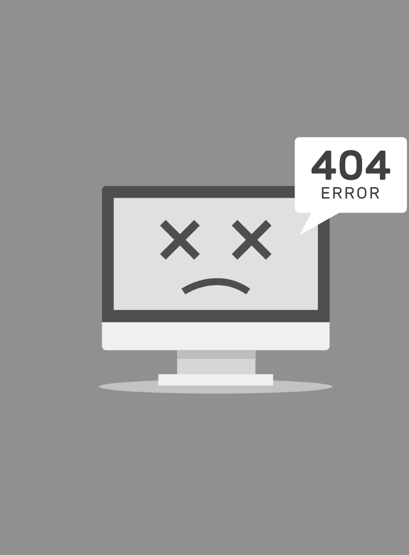Neglecting the visual side of a project is common in startups. One might even say that designers aren’t much interested in becoming a part of the management team. Despite that, they appear to be better startuppers than we would’ve thought at first glance.
When we envision an entrepreneur, their leading quality is fast problem solving and creative, bold thinking skills. They have to be able to see connections in places where there weren’t any. Just as important is finding balance between potential clients, coworkers, and investors.
A good designer’s job description is not that different from the above. a broad vision and high standards, creativity, finding connections between various concepts and the product, customer behavior analysis, accounting for the client’s desires, and bringing all of these together in harmony… There aren’t many professions that are so close to the entrepreneurial drive.
Apple as a significant example
Everyone knows how important design was for Steve Jobs: In 1982, he put Eslinger in charge of product design and was paying him 1 million dollars a year for it. Simplicity became Apple’s watermark, which is demonstrated in high-quality design in the eyes of the user. Despite arguably slipping a few points every year in their technological advancement, there’s one thing Apple does very well: Make beautiful products that don’t break easily.

But, let’s look at other companies too: Pinterest, Behance, Kickstarter, Slack, and Flickr – This isn’t even a full list of the ingenious unicorn startups whose co-founders are designers.
Behance and Pinterest – For self-expression and inspiration
Every designer knows Behance. This is a place where they can showcase their work. Two leading figures stand behind the concept: Entrepreneur Scot Belsky and brand and print designer Matias Corea. Their coming together wasn’t a coincidence at all. When Scot had the idea for Behance, he first started looking for a designer cofounder. In one of the interviews, Matias notes that he though Belsky design while Belsky taught him entrepreneurship:
“The solution was always given back to us by the brand, the company, or the product itself. Sometimes we had questions and they got answered by what we had created.”
On this Belsky adds:
“Which is a huge difference from when you outsource design or just hire a designer. Or when a designer founder hires a business person to do the business stuff. If we had outsourced those parts, Behance would never have been able to answer our own questions.”
Pinterest is nothing less than Behance. This online space serves users as a way of self-expression and a source of inspiration.
“There is no black and white line between design and engineering.” – Says the co-founder of Pinterest.
Evan Sharp is a product designer who had to grasp a manager’s skills from the start when he started at Pinterest. The experience of a designer has helped him notice things that finally led the online magazine Wired to put him on the list of technological leaders who would revolutionize the web in the upcoming 25 years. It is mportant to note here that Pinterest is thought to be one of the most humanistic and interface oriented platforms on Silicon Valley.
When Evan talks about the role of a manager and finding the right employees, he notes that a good employer should be able to see their weaknesses. It’s hard to disagree with him on that. Evan sees a parallel between this quality and being a good designer:
“If you have a good eye for design, it means that you’re set up well to see what you’re good and bad at. If you see what you’re bad at, you’re going to work on it to make yourself better, and that’s at the core of any great design team.”
But Behance and Pinterest are both platforms mainly for designers. Let’s go beyond such endeavors, and we’ll find even more designer startuppers.
Kickstarter – A place for reciprocity and innovation
Kickstarter is a crowdfunding platform where anyone can publish their project idea. Backers then scroll the platform, and when they find a project they are interested in, they pre-buy their products. If the project manages to gather the amount needed, they build the product and send it to the backers. If not, the backers get their money back.
The only way to interest the backers is the project’s page. Therefore, project initiators need as much freedom as possible to show their character. But the platform also needs some structure to make it easy to find all necessary information about the project (offerings, amount funded, about the author, budget distribution, etc.). In other words, project pages need to be consistent so that users don’t get puzzled, and unique, so that project initiators can attract backers.
Combining these two seemingly contradictory qualities was the main job of Kickstarter’s graphic designer co-founder, Charles Adler. When he talks about the development process, he says that the main thing he would always remind himself was, “Less of us, more of them.”
Kickstarter has already gathered 4.5 Billion dollars for its projects, and its success rate is more than 37%.
Slack – the most effective system for work-related communication
The author of Slack and Flickr is Stewart Butterfield, and we’ve talked about his road from failed concepts to unicorn startups in this article. Here he serves as an example of those designer entrepreneurs who weren’t just involved in startup creation but also came up with the idea themselves. There’s a saying going around in Silicon Valley that coming up with a viral product is like catching lightning in a bottle. Butterfield, formerly a product designer, managed to do that twice. His main advantage is known to be a delicate, user-friendly interface:
“He’s the sort of person who, if he’d lived in the Middle Ages, would have produced the perfect leather bag, with just the right stitching — he’s a craftsman.” – Says one of the early investors of Slack.

Ellevest – Online investment platform for women
Customer behavior analysis is just as critical in design as it is in new product creation. Often designers are the people who notice misconceptions about the end-users that technology-oriented founders miss.
Ellevest is an online investment platform designed for women. Its founders brought in a designer at the early stages of project development. The company acquired 77.6 Million dollars in funding since its inception in 2014.
When Sally Krauchek, the author of the idea, talks about the project development, she notes that bringing a designer at the early stages turned out a lot more critical for the project success than she envisioned. The reason for this is the research that Melisa did for product design.
One of her crucial findings was that women aren’t risk-averse, as many assumed at all. They simply want to have more understanding of the risks which traditional investment platforms don’t offer. So, Ellevest tackled this obstacle in the right way, thanks to Mellisa. In addition to that, it was her idea to come up with a fun and friendly registration form that differed from the traditional ones. This evoked a sense of trust in users, and they were more comfortable with using the platform.

Good design goes beyond visuals
Design is not just pretty typography, logo, and illustrations (Although these details are more important than most people think). Design is the primary tool for communicating with users. According to CB Insights, one of the top-20 reasons for startup failure is un-friendly interface (17%). The same statistics show that third reason for such is the wrong team (23%).
This doesn’t mean that merely being a designer is enough to build a startup. We can envision designers as your advocates for your users. Great designers will be able to balance between the goals of the business and the needs of the user. Their involvement in the early stages of development turns out to be just as efficient as the involvement of software engineers or businessmen. There even is a web-page about successful designer founders who share their experience and give motivation to creative people interested in such endeavors.



Designers Who Shaped Multi-Million Dollar Startups
03 September 2020Neglecting the visual side of a project is common in startups. One might even say that designers aren’t much interested in becoming a part of the management team. Despite that, they appear to be better startuppers than we would’ve thought at first glance.
When we envision an entrepreneur, their leading quality is fast problem solving and creative, bold thinking skills. They have to be able to see connections in places where there weren’t any. Just as important is finding balance between potential clients, coworkers, and investors.
A good designer’s job description is not that different from the above. a broad vision and high standards, creativity, finding connections between various concepts and the product, customer behavior analysis, accounting for the client’s desires, and bringing all of these together in harmony… There aren’t many professions that are so close to the entrepreneurial drive.
Apple as a significant example
Everyone knows how important design was for Steve Jobs: In 1982, he put Eslinger in charge of product design and was paying him 1 million dollars a year for it. Simplicity became Apple’s watermark, which is demonstrated in high-quality design in the eyes of the user. Despite arguably slipping a few points every year in their technological advancement, there’s one thing Apple does very well: Make beautiful products that don’t break easily.
But, let’s look at other companies too: Pinterest, Behance, Kickstarter, Slack, and Flickr – This isn’t even a full list of the ingenious unicorn startups whose co-founders are designers.
Behance and Pinterest – For self-expression and inspiration
Every designer knows Behance. This is a place where they can showcase their work. Two leading figures stand behind the concept: Entrepreneur Scot Belsky and brand and print designer Matias Corea. Their coming together wasn’t a coincidence at all. When Scot had the idea for Behance, he first started looking for a designer cofounder. In one of the interviews, Matias notes that he though Belsky design while Belsky taught him entrepreneurship:
“The solution was always given back to us by the brand, the company, or the product itself. Sometimes we had questions and they got answered by what we had created.”
On this Belsky adds:
“Which is a huge difference from when you outsource design or just hire a designer. Or when a designer founder hires a business person to do the business stuff. If we had outsourced those parts, Behance would never have been able to answer our own questions.”
Pinterest is nothing less than Behance. This online space serves users as a way of self-expression and a source of inspiration.
“There is no black and white line between design and engineering.” – Says the co-founder of Pinterest.
Evan Sharp is a product designer who had to grasp a manager’s skills from the start when he started at Pinterest. The experience of a designer has helped him notice things that finally led the online magazine Wired to put him on the list of technological leaders who would revolutionize the web in the upcoming 25 years. It is mportant to note here that Pinterest is thought to be one of the most humanistic and interface oriented platforms on Silicon Valley.
When Evan talks about the role of a manager and finding the right employees, he notes that a good employer should be able to see their weaknesses. It’s hard to disagree with him on that. Evan sees a parallel between this quality and being a good designer:
“If you have a good eye for design, it means that you’re set up well to see what you’re good and bad at. If you see what you’re bad at, you’re going to work on it to make yourself better, and that’s at the core of any great design team.”
But Behance and Pinterest are both platforms mainly for designers. Let’s go beyond such endeavors, and we’ll find even more designer startuppers.
Kickstarter – A place for reciprocity and innovation
Kickstarter is a crowdfunding platform where anyone can publish their project idea. Backers then scroll the platform, and when they find a project they are interested in, they pre-buy their products. If the project manages to gather the amount needed, they build the product and send it to the backers. If not, the backers get their money back.
The only way to interest the backers is the project’s page. Therefore, project initiators need as much freedom as possible to show their character. But the platform also needs some structure to make it easy to find all necessary information about the project (offerings, amount funded, about the author, budget distribution, etc.). In other words, project pages need to be consistent so that users don’t get puzzled, and unique, so that project initiators can attract backers.
Combining these two seemingly contradictory qualities was the main job of Kickstarter’s graphic designer co-founder, Charles Adler. When he talks about the development process, he says that the main thing he would always remind himself was, “Less of us, more of them.”
Kickstarter has already gathered 4.5 Billion dollars for its projects, and its success rate is more than 37%.
Slack – the most effective system for work-related communication
The author of Slack and Flickr is Stewart Butterfield, and we’ve talked about his road from failed concepts to unicorn startups in this article. Here he serves as an example of those designer entrepreneurs who weren’t just involved in startup creation but also came up with the idea themselves. There’s a saying going around in Silicon Valley that coming up with a viral product is like catching lightning in a bottle. Butterfield, formerly a product designer, managed to do that twice. His main advantage is known to be a delicate, user-friendly interface:
“He’s the sort of person who, if he’d lived in the Middle Ages, would have produced the perfect leather bag, with just the right stitching — he’s a craftsman.” – Says one of the early investors of Slack.
Ellevest – Online investment platform for women
Customer behavior analysis is just as critical in design as it is in new product creation. Often designers are the people who notice misconceptions about the end-users that technology-oriented founders miss.
Ellevest is an online investment platform designed for women. Its founders brought in a designer at the early stages of project development. The company acquired 77.6 Million dollars in funding since its inception in 2014.
When Sally Krauchek, the author of the idea, talks about the project development, she notes that bringing a designer at the early stages turned out a lot more critical for the project success than she envisioned. The reason for this is the research that Melisa did for product design.
One of her crucial findings was that women aren’t risk-averse, as many assumed at all. They simply want to have more understanding of the risks which traditional investment platforms don’t offer. So, Ellevest tackled this obstacle in the right way, thanks to Mellisa. In addition to that, it was her idea to come up with a fun and friendly registration form that differed from the traditional ones. This evoked a sense of trust in users, and they were more comfortable with using the platform.
Good design goes beyond visuals
Design is not just pretty typography, logo, and illustrations (Although these details are more important than most people think). Design is the primary tool for communicating with users. According to CB Insights, one of the top-20 reasons for startup failure is un-friendly interface (17%). The same statistics show that third reason for such is the wrong team (23%).
This doesn’t mean that merely being a designer is enough to build a startup. We can envision designers as your advocates for your users. Great designers will be able to balance between the goals of the business and the needs of the user. Their involvement in the early stages of development turns out to be just as efficient as the involvement of software engineers or businessmen. There even is a web-page about successful designer founders who share their experience and give motivation to creative people interested in such endeavors.